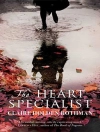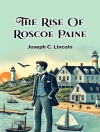D. K. Broster’s ‘The Yellow Poppy’ is a captivating exploration of the intricate interplay between love, loss, and the quest for identity set against the backdrop of World War I. This evocative novel weaves rich character studies with stunning prose, embodying a modernist literary style that reflects the disillusionment of the era. Through its vivid imagery and atmospheric setting, Broster immerses readers in a world where the fragility of human connections flourishes amidst the chaos of war, ultimately challenging perceptions of heroism and sacrifice. D. K. Broster, a notable figure in early 20th-century literature, often drew inspiration from her own experiences and the socio-political landscape of her time. Raised in a literary environment, she was acutely aware of the psychological scars left by conflict, which deeply influenced her narratives. Her keen interest in Scottish folklore and culture also resonates throughout the text, enriching the thematic depth and complexity of the characters’ journeys as they navigate their turbulent realities. This novel is highly recommended for readers seeking a profound narrative that delves into the psychological dimensions of its characters. Broster’s nuanced portrayal of human resilience and the haunting echoes of an unresolved past makes ‘The Yellow Poppy’ an essential read for those interested in the intersection of historical events and personal struggles.
Despre autor
Dorothy Kathleen Broster, commonly known as D. K. Broster (1877–1950), was a British author best known for her historical novels that often included elements of adventure and romance. Before turning to full-time writing, Broster served as a Red Cross nurse during the First World War, an experience which enriched her understanding of human character and no doubt informed her later works. Broster published her most memorable contribution to literature, ‘The Flight of the Heron’, in 1925, which was part of her Jacobite Trilogy, painting a vivid picture of 18th-century Scotland.
Broster’s lesser-known work, ‘The Yellow Poppy’ (1920), exemplifies her gift for creating engaging narratives set against historical backdrops. The novel is an example of her skill in blending historical accuracy with literary flair. Prior to her foray into historical fiction, she also penned stories with supernatural themes, expanding her range as an author. Critics have lauded Broster for her rich character development and detailed settings, which transported readers to the historical periods she portrayed. Despite being less well-known today, Broster’s contributions remain of interest to scholars and enthusiasts of early 20th-century historical fiction.












